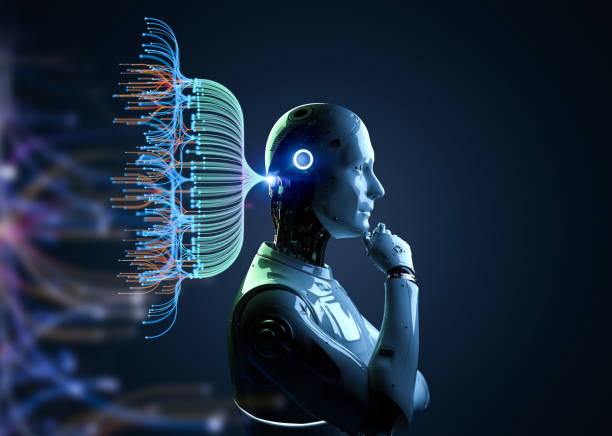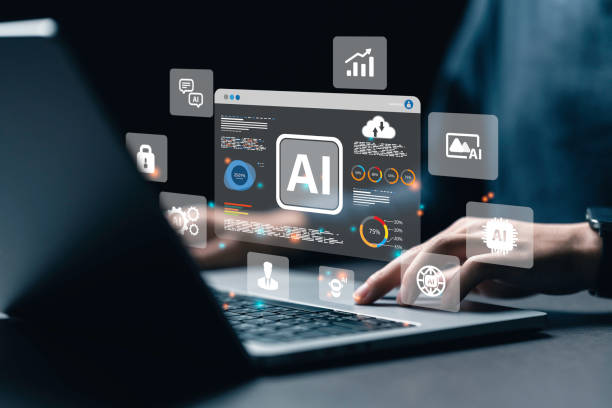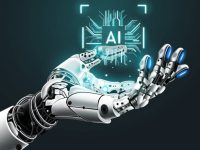Machine learning vs AI
The following piece of work investigates the distinction between machine learning and artificial intelligence since these terms represent different aspects of technology. Specifying all their common aspects does not help in clearly defining the operational elements and goals of present-day technological advancement. Two related technologies known as machine learning and artificial intelligence keep advancing which makes it logical to explain their main features and areas of consensus and difference alongside their applications.

The article will examine Machine Learning vs AI while showing their utilization strategies alongside their essential role in modern social systems.
What is AI? Artificial intelligence represents a wide branch of computer science dedicated to creating systems with mastery of human-like intelligence capabilities and learning abilities. Artificial intelligence serves to duplicate how a human brain processes information by thinking and learning as well as understanding concepts to reach decisions. AI systems operate through automation to accept information then analyze it before converting data for identification of specific characteristics during prediction creation.
Both categories of AI exist as Narrow or Weak AI alongside General or Strong AI. AI technologies designed for restricted solutions form the first category while General AI represents an advanced form of future computing that surpasses human-level capabilities across multiple domains including Narrow AI capabilities.
What is Machine Learning? Machine learning stands as a subdivision of AI that empowers systems to acquire knowledge by generating algorithms which lead to computerized decision-making. These systems acquire their accuracy through multiple trials of decision-making processes made possible by data quantity expansion.
The system obtains knowledge from data which enables independent decision making and increased efficiency of its decision process. The three machine learning frameworks namely supervised learning and unsupervised learning and reinforcement learning each require unique execution methods.
These two concepts have specific traits that differentiate them from each other yet these distinctions remain significant to recognize.
Scope:
Smart system design comprises all aspects of AI which includes thinking, planning, visioning and using word as a communication tool.
Machine learning exists as a specific AI sub-field responsible for creating algorithms that enhance their functionality through data processing even without programmed instructions.
Learning Method:
AI systems operate differently from machine learning systems because they cannot learn in the same fashion. The systems come with built-in directives and target benchmarks coupled with procedure parameters to follow during task execution.
The processing method of Machine learning systems operates strictly through data analysis to find related patterns that generate predictive capabilities. Such systems possess the capability to refresh model input data which results in system operational efficiency improvements.
Autonomy:
The rules in AI systems need manual modification or newly added rules coming from the user. Operation of these systems depends on rules which were established before deployment in the system.
Self-contained operation exists in operational systems of ML since these systems enhance operational flexibility through learning from new input data.
Complexity: Machine learning vs AI
AI contains two components including symbolic reasoning which acts as supported learning together with neural nets and additional techniques but this structure does not necessarily support machine learning programs.
Machine learning depends on algorithms to forecast future events while utilizing statistical analyses of higher depth with mathematical predictions.
Organizations revolutionize every aspect of industrial human-technology interactions through AI and ML applications. These technological applications utilize the systems described above according to the following examples:
Health care receives benefits from AI which detects ailments and treats conditions through image-based disease analysis of medical information to deliver patient outcome predictions. Medical data when analyzed by machine learning systems creates information used to improve drug development together with medical diagnosis accuracy.
Explanations
Finance industry has experienced significant penetration from AI technology which now enables automatic operations for fraud prevention and algorithmic trading and credit rating. These technological systems enable financial organizations to develop better market predictions and make improved business choices through dependable information.
Retail sector employs AI analytics for companies to determine client actions which results in choosing optimal match-ups between shoppers and products. The implementation of forecasting models serves both supply chain forecasting and inventory management purposes in addition tautomer relationship improvement.
The transportation industry receives improvement due to self-driven vehicles which operate through Artificial Intelligence and Machine learning algorithms. This type of transportation mode can learn from sensor and camera data in its local environment to formulate safe effective routes for driving.
Some advanced Natural Language Processing systems exist in chatbots and virtual assistants enabling them to understand human language input. The systems become better at personal interaction because they acquire knowledge through continuing observation and learning.
AI and machine learning exist in perpetual development because there always remain issues waiting for solutions and multiple areas of application. Production lines alongside customer relations have started using automation while Artificial Intelligence continues to develop toward general intelligence systems.
People must examine ethical matters carefully before starting a business with this concept. AI and machine learning technologies present problems regarding privacy security and job employment due to widespread recognition among scholars and experts. A permanent study along with a regulation system for these technologies must be developed while collaboration between technologists and policymakers will forge a better society.
Conclusion about Machine learning vs AI
The debate of Machine Learning vs AI highlights an important distinction within the world of technology. AI functions as the foundational idea for building systems able to mimic human functions while machine learning operates as a subcategory which trains algorithms with the use of algorithms. Multiple distinctions between these approaches must be understood by people implementing the technologies across various fields.

Machine learning demonstrates powerful ability alongside growing AI technology to create significant future goals. Assessing the potential of these tools requires proper knowledge of each method along with responsible handling of different devices.
FAQs about Machine learning vs AI
It is possible to achieve artificial intelligence without deploying machine learning algorithms is it?
The operation of programs can be achieved without utilizing any parameters belonging to machine learning. Every kind of artificial intelligence operates without mandatory learning characteristics. Expert systems function as traditional pre-learned systems rule-based systems or logical systems without needing any data pattern training. Using machine learning to boost AI systems makes them adaptable as well as able to modify themselves on their own. Machines become more resilient when they acquire this ability to learn.


















0 Comments